
The Opomyzoidea are a superfamily of flies.

The Agromyzidae are a family of flies, commonly referred to as the leaf-miner flies for the feeding habits of their larvae, most of which are leaf miners on various plants. It includes roughly 2,500 species, they are small, some with wing length of 1 mm. The maximum size is 6.5 mm. Most species are in the range of 2 to 3 mm.

The Tetracampidae are a small family of parasitic wasps in the superfamily Chalcidoidea. They are parasitoids of phytophagous insects, primarily flies. The 44 species in 15 genera are almost entirely absent from the New World.

Agromyza is a genus of flies belonging to the family Agromyzidae. The adults of these flies can be recognised by the presence of stridulatory files on the first two abdominal tergites in both males and females. Another useful identifying feature is the halteres which are usually white or yellow, although they are darker in a few tropical species.
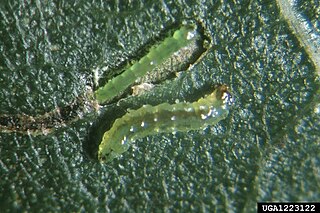
The serpentine leaf miner is the larva of a fly, Liriomyza brassicae, in the family Agromyzidae, the leaf miner flies. It mines wild and cultivated plants, such as cabbage, broccoli, cauliflower and Chinese broccoli.

Phytomyza horticola is a species of leaf-mining fly in the family Agromyzidae of the order Diptera. For a time it was treated as Chromatomyia horticola, but its original name has been restored after genus Chromatomyia was synonymized with Phytomyza. The species is a pest of high economic importance affecting the vegetable crops in temperate and tropical regions.
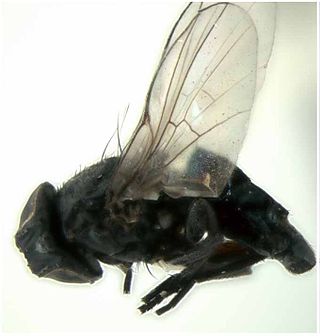
Ophiomyia is a genus of flies in the family Agromyzidae.

Euhexomyza is a genus of flies belonging to the family Agromyzidae.

Phytoliriomyza dorsata is a species of fly in the family Agromyzidae.

Phytoliriomyza is a genus of flies in the family Agromyzidae.
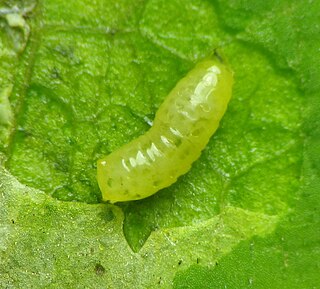
Phytomyzinae is a subfamily of flies in the family Agromyzidae. There are at least 520 described species in Phytomyzinae.
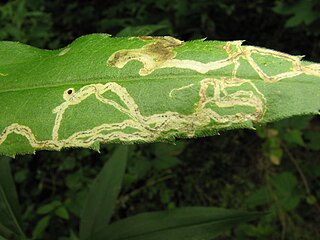
Phytomyza is a genus of leaf miners in the family Agromyzidae.

Calycomyza is a genus of flies in the family Agromyzidae.

Liriomyza is a genus of flies in the family Agromyzidae.
Amauromyza is a genus of flies in the family Agromyzidae.
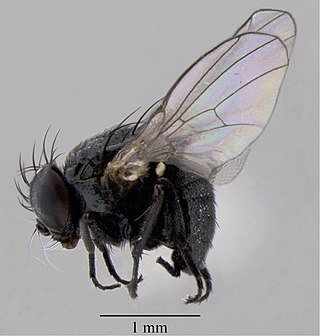
Japanagromyza is a genus of flies in the family Agromyzidae.
Phytoliriomyza felti is a species of fly in the family Agromyzidae.

Phytobia is a genus of flies in the family Agromyzidae, with a worldwide distribution principally in Europe and the Americas.
















